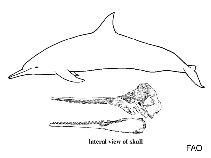Orcaella heinsohni Beasley, Robertson & Arnold, 2005
Australian snubfin dolphinWarning: DOMDocument::load(): SSL operation failed with code 1. OpenSSL Error messages: error:140770FC:SSL routines:SSL23_GET_SERVER_HELLO:unknown protocol in C:\Apache24\htdocs\includes\SpeciesSummary.lib.php on line 1236
Warning: DOMDocument::load(): Failed to enable crypto in C:\Apache24\htdocs\includes\SpeciesSummary.lib.php on line 1236
Warning: DOMDocument::load(https://sealifebase.nrm.se/webservice/AquaMaps/getAMap.php?genus=Orcaella&species=heinsohni): failed to open stream: operation failed in C:\Apache24\htdocs\includes\SpeciesSummary.lib.php on line 1236
Warning: DOMDocument::load(): I/O warning : failed to load external entity "https://sealifebase.nrm.se/webservice/AquaMaps/getAMap.php?genus=Orcaella&species=heinsohni" in C:\Apache24\htdocs\includes\SpeciesSummary.lib.php on line 1236
Mandar um arquivo com seu (sua) Fotos
Imagem do Google | No image available for this species;
drawing shows typical species in Delphinidae.
Imagem do Google | No image available for this species;
drawing shows typical species in Delphinidae.
Classification / Names Common names | Synonyms | CoL | ITIS | WoRMS
| Cetartiodactyla | Delphinidae
Environment: milieu / climate zone / depth range / distribution range Ecologia
Pelágico(a,os,as); intervalo de profundidade 0 - 200 m, usually 1 - 10 m. Tropical; 7°S - 90°S, 100°E - 180°E
Distribuição Países | Áreas FAO | Ecossistemas | Ocorrências | Introduções
Indo-Pacific: Australia and Papua New Guinea.
Length at first maturity / Tamanho / Peso / Idade
Maturity: Lm ? range ? - ? cm Max length : 270 cm TL macho/indeterminado; (Ref. 78832); 230 cm TL (female)
Descrição suscinta Morfologia
In lateral view the head is rounded and usually bounded by a distinct neck crease, lacking dorsal groove; mesethmoid plate reduced and generally in advance of the anterior most nasal ossicle, exposing a large area of the frontal bone; presence of supernumerary bone between nasal ossicles and posterior border of mesethmoid; has a greater length of the antiorbital process and a more closely opposed pterygoid hamuli with medial flanges.
Occurs in protected, shallow, coastal waters especially adjacent to river and creek mouths (Ref. 79537).
Life cycle and mating behavior Maturidade | Reprodução | Desova | Ovos | Fecundidade | Larvas
Referência principal
Referências | Coordenador | Colaboradores
Beasley, I., K.M. Robertson and P. Arnold. 2005. (Ref. 78832)
Status na Lista Vermelha da IUCN (Ref. 130435)
Vulnerável, ver Livro Vermelho da IUCN (VU) (A2cd+3cd+4cd; C2a(i)); Date assessed: 06 June 2017
Status no CITES (Ref. 108899)
Appendix I: International trade banned
CMS (Ref. 116361)
Appendix II: Migratory species conserved through agreements
Perigo para os humanos
Harmless
Uso pelos humanos
FAO - pescarias: landings | FishSource |
Ferramentas
Mais informação
Fontes da internet
BHL | BOLD Systems | CISTI | DiscoverLife | FAO(pescarias: ; publication : search) | Fishipedia | GenBank (genoma, nucleotídeo) | GloBI | Gomexsi | Google Books | Google Scholar | Google | PubMed | Árvore da vida | Wikipedia (Ir para, procura) | Registro zoológico
Estimates based on models
Preferred temperature
(Ref. 115969): 26.9 - 28.8, mean 28 (based on 452 cells).



